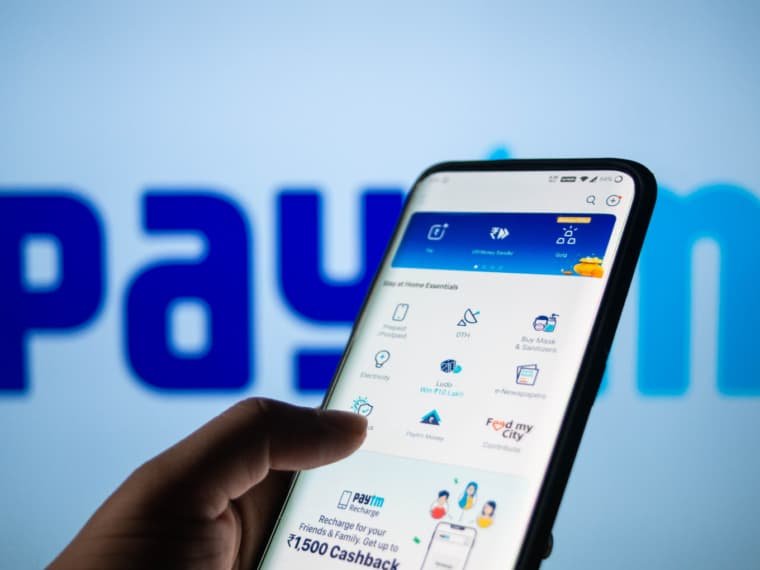The Reserve Bank of India (RBI) has just handed Paytm a green signal that could reshape its future — and potentially impact the paytm share price in a big way. After almost three years of regulatory uncertainty, the fintech giant has received in-principle approval to operate as an online payment aggregator. This development not only reopens doors for merchant onboarding but also signals a major comeback for Paytm in India’s rapidly evolving digital payments landscape.
A Long Road Back for Paytm
If you’ve been following Paytm’s journey, you’ll know it hasn’t been a smooth ride. Back in November 2022, the RBI rejected the company’s initial application for a payment aggregator licence. The reason? Non-compliance with foreign direct investment (FDI) norms. Along with that rejection came a big blow — Paytm was barred from onboarding new merchants. For a payments company, that’s like being a chef banned from entering the kitchen.
Fast forward to August 12, 2025, and the tide has turned. An official letter from the RBI granted Paytm Payments Services Limited (PPSL) — a wholly-owned subsidiary of One 97 Communications Ltd (Paytm) — an in-principle authorisation to operate as an online payment aggregator under the Payment and Settlement Systems Act, 2007.
What This Approval Really Means
Let’s be clear — this isn’t a blanket approval for all kinds of payment activities. The RBI has specified that the licence applies only to online payment aggregator operations as defined in the PA-PG Guidelines. That means Paytm can facilitate digital transactions between merchants and customers, but certain activities like pay-out transactions on behalf of merchants can’t be routed through the escrow account meant for PA operations.
Think of it like getting the keys to your car back — but only for city driving, not highways. It’s a big win, but there are still rules to follow.
Conditions Attached to the Licence
The RBI’s approval isn’t without strings attached. PPSL has been told to:
-
Conduct a system audit, including a cybersecurity audit, within six months.
-
Submit the audit report to the RBI within that timeframe.
-
Remember — if PPSL misses the deadline, the in-principle authorisation will lapse, and the final licence won’t be granted.
Additionally, the RBI has reminded Paytm to follow guidelines that require prior approval for changes in shareholding, acquisition of control, or transfer of payment system operations — pretty standard, but crucial to compliance.
The Financial Rebound That Changed the Game
It’s no coincidence that this regulatory nod comes at a time when Paytm’s finances are looking the healthiest they’ve been in years. In Q1FY26 (April–June 2025), Paytm posted a consolidated net profit of ₹123 crore — a sharp turnaround from the ₹839 crore loss it suffered in the same quarter last year.
What’s remarkable here is that this was the first operationally-driven quarterly net profit since the company’s IPO. In other words, it wasn’t just a one-off accounting gain — the core business itself is performing better.
Paytm’s Path to Recovery
This comeback didn’t happen overnight. It began after a rough patch starting in January 2024, when the RBI imposed restrictions on Paytm Payments Bank. That move led to a significant revenue drop over six months and forced the company to rethink its operations.
Here’s how Paytm clawed its way back:
-
Cutting Costs: The company went lean, slashing unnecessary expenses.
-
Selling Non-Core Assets: Assets like Paytm Insider were sold off to free up resources.
-
Resetting Merchant Lending: The merchant lending business was restructured for better efficiency.
These measures not only stabilised Paytm but also paved the way for a stronger operational foundation — something investors are clearly noticing.
A Shift in Ownership – Goodbye Chinese Stake
In another big development, Chinese fintech giant Ant Financial has completely exited Paytm. The company sold its remaining 5.84% stake for about ₹3,800 crore through block deals. With this move, Chinese ownership in Paytm is now zero — a change that could have strategic implications, especially given India’s tightened stance on Chinese investments.
This ownership shift might also boost investor confidence, potentially giving the paytm share price another reason to rally.
Numbers That Tell the Story
The Q1FY26 results show exactly why Paytm is suddenly back in the spotlight:
-
Operating Revenue: ₹1,918 crore — up 28% year-on-year.
-
Contribution Profit: ₹1,151 crore — up 52% year-on-year.
-
Contribution Margin: 60% — a healthy improvement.
These are not just good numbers; they are signs of a business that has tightened its ship and is now cruising in the right direction.
Impact on Paytm Share Price
Naturally, one of the biggest questions investors are asking is — what does this mean for the paytm share price?
In the stock market, sentiment plays a huge role. And right now, sentiment around Paytm is looking bullish. The RBI approval removes a major regulatory overhang, while strong earnings numbers create a fundamental reason for investors to stay optimistic.
Think of it like a sports team that’s just regained its star player after a long injury — suddenly, championship dreams don’t seem so far-fetched.
Why This Matters for the Digital Payments Landscape
Paytm’s return to full merchant onboarding comes at a time when India’s digital payments ecosystem is more competitive than ever. Players like PhonePe, Google Pay, and Razorpay have been aggressively expanding. With this approval, Paytm can once again compete head-to-head, particularly in the high-growth small and medium business (SMB) segment.
For merchants, it means more options and potentially better service offerings. For customers, it means a more vibrant payments market — and maybe even better rewards and offers.
What’s Next for Paytm
While the in-principle approval is a big win, the next six months will be crucial. Completing the mandated audits and securing final approval will be the immediate focus. Beyond that, Paytm will likely:
-
Expand its merchant base aggressively.
-
Enhance payment gateway technology.
-
Integrate more value-added services for merchants.
If executed well, these moves could drive both revenue growth and — you guessed it — further upward momentum in the paytm share price.
The Bottom Line
This RBI approval marks the end of a challenging chapter for Paytm and the start of a potentially more profitable era. The combination of regulatory clarity, financial strength, and strategic ownership changes could set the stage for sustained growth.
For investors, merchants, and customers alike, this is a story worth watching — because Paytm’s next moves could influence not just its own destiny but also the shape of India’s digital payments future.
Read More: South Africa vs Australia T20 Clash: Carey Steps In, Van der Dussen Back!
Conclusion
After nearly three years of waiting, Paytm has finally got its payment aggregator licence green-lit by the RBI. This isn’t just a regulatory victory — it’s a shot of confidence for the company’s business model, its investors, and its customers. With stronger financials, a cleaner shareholding structure, and the ability to onboard merchants again, Paytm is positioning itself for a big leap forward.
The paytm share price will likely remain in focus in the coming months as markets digest these developments. But one thing’s clear — Paytm has shown it can take a punch, get back up, and fight even harder.









